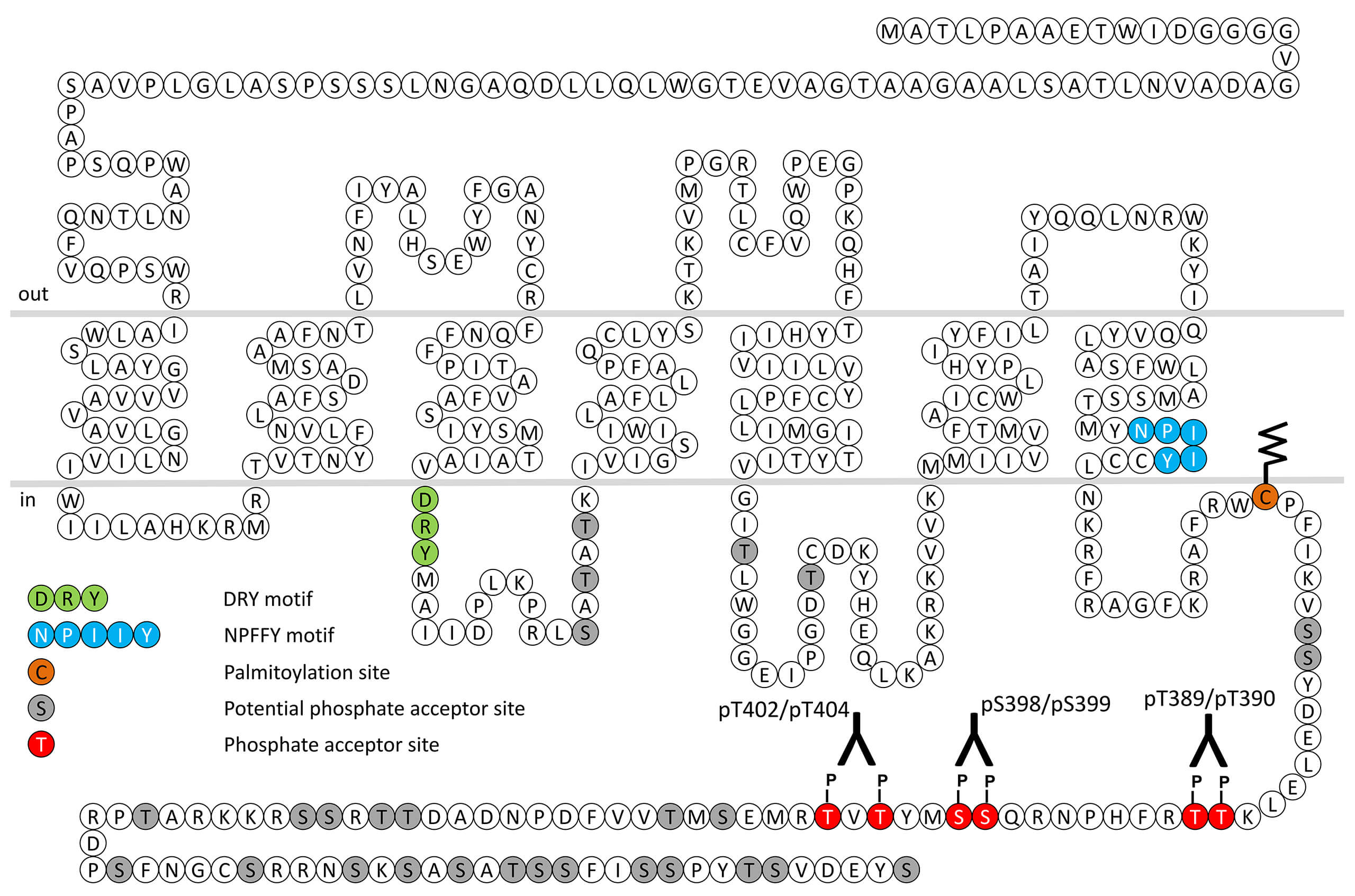Tachykinin 3/Neuromedin K (NK3) Receptor Antibodies

Tachykinin 3 (NK3) receptor is a member of the tachykinin receptor family, which preferentially binds its ligand neurokinin B (NKB, previously known as neuromedin K). NK3 receptor is a seven transmembrane receptor that associates with the G-proteins q11. NK3 receptors are found throughout both the central and peripheral nervous system. In humans, NK3 receptors are located in the frontal, temporal and parietal cortices, the hippocampus, the locus niger, the dorsal raphe nucleus, the hypothalamus, the striatum, the kidney, total human embryo, and the placenta. Activation of the NK3 receptor modulates the activity and release of other neurotransmitters such as dopamine and norepinephrine. Tachykinins are important in mediating smooth muscle contraction and relaxation, vasodilation, and activation of the immune system. The role of NK3 receptor in the CNS has not been fully elucidated but it is believed to play a role in somatic and visceral sensory integration, cardio-respiratory regulation, water and electrolyte balance, and may be important in learning, memory, and behavioral responses. NK3 receptor may play a role in the pathogenesis of obstructive airway disease, hypertension, pre-eclampsia, irritable bowel syndrome, pain perception, schizophrenia and anxiety and depression. The therapeutic potential of several NK3 receptor antagonists are being investigated, especially for their use as anti-anxiolytic and anti-depressant therapies. Two of the best studied non-peptide antagonists are osanetant (SR142801) and talnetant (SB223412). NK3 receptor desensitization, β-arrestin recruitment and internalization are regulated by phosphorylation of carboxyl-terminal threonine375/serine376 (pT389/pT390-NK3), serine382/serine384 (pS398/pS399-NK3) and serine387/serine388 (pT402/pT404-NK3). This nomenclature refers to the human NK3 receptor. This phosphorylation motif is conserved across species but corresponds to pT376/pT378-NK3, pS385/pS386-NK3 and pT389/pS391-NK3 in mice and rats. For more information on NK3 pharmacology please refer to the IUPHAR database. For further reading refer to:
Barrett J, Canning B, Coulson J, Dombrowsky E, Douglas SD, Fong TM, Heyward CY, Leeman SE, Remeshwar P. Tachykinin receptors (version 2019.4) in the IUPHAR/BPS Guide to Pharmacology Database. IUPHAR/BPS Guide to Pharmacology CITE. 2019; 2019(4).
 pT402/pT404-NK3 (phospho-Tachykinin Receptor 3...
pT402/pT404-NK3 (phospho-Tachykinin Receptor 3...  pS398/pS399-NK3 (phospho-Tachykinin Receptor 3...
pS398/pS399-NK3 (phospho-Tachykinin Receptor 3...  pT389/pT390-NK3 (phospho-Tachykinin Receptor 3...
pT389/pT390-NK3 (phospho-Tachykinin Receptor 3... 

